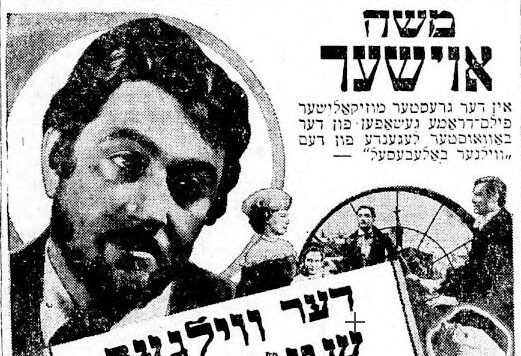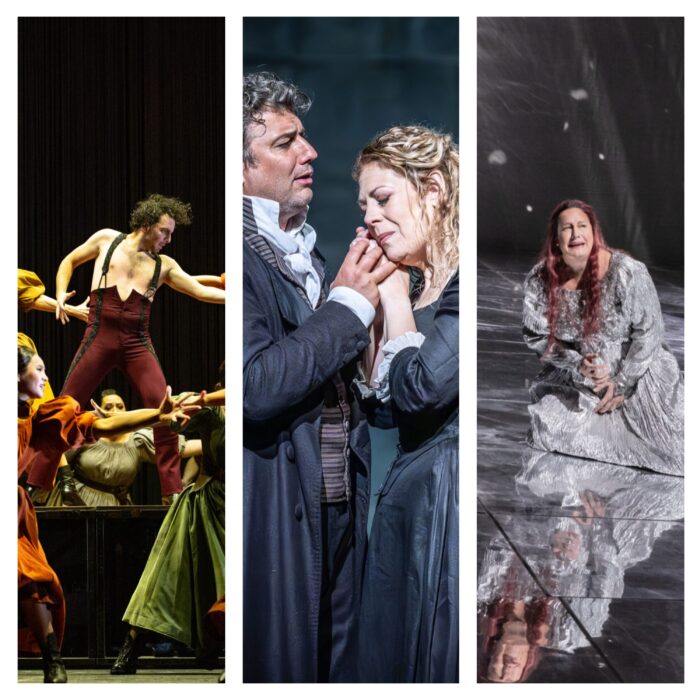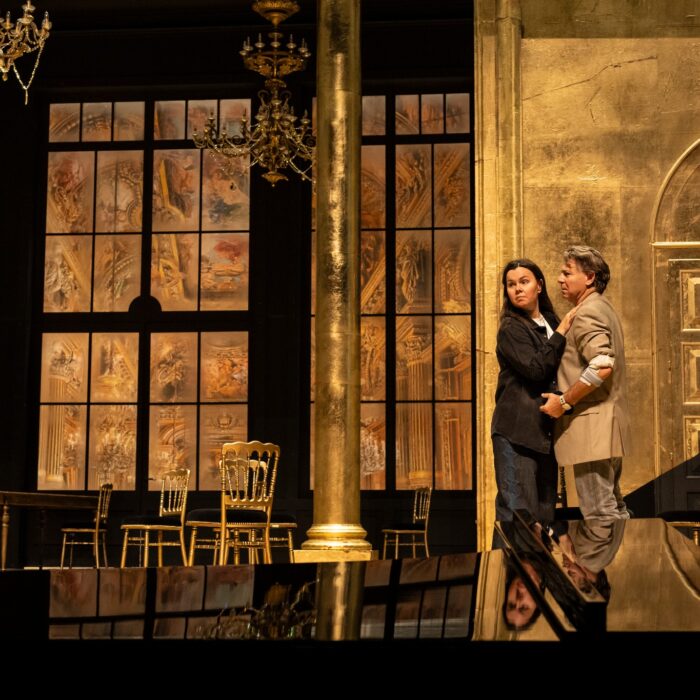
Opera Meets Film: ‘Eun Sun Kim: A Journey Into Lohengrin’
By John Vandevert(Photo Credit: San Francisco Opera)
On November 1, at 8 p.m. (PDT), the new film, “Eun Sun Kim: A Journey Into Lohengrin,” was broadcast for the first time, although being available for viewing already. Featuring the Korean conductor Eun Sun Kim and her labors around the preparation of San Francisco Opera’s 2023 production of Wagner’s “Lohengrin,” the behind-the-scenes film is but one in a growing trend of operatic films designed to show the background of staged operatic marvels.
Having grown up in Seoul, South Korea, she gained her musical training both at home and abroad, reaching the conducting mainstream thanks to her success at the 2008 Lopez Cobos International Opera Conductors Competition. Since then, she has gone on to conduct many high-profile works within the operatic and performance spaces around Europe. In 2021, Kim was appointed music director of San Francisco Opera, effective until the 2030-31 season. The film documents the great challenges posed in staging “Lohengrin,” with the many layers of collaboration being the bulk of the film’s content. Describing the film’s narrative, the Opera House wrote,
“Eun Sun Kim: A Journey Into Lohengrin offers a rare glimpse into the process of mounting Wagner’s monumental 1850 opera and assembling the many layers of preparation, from coaching roles and staging the opera’s large choral scenes to balancing the sounds of the musicians located in the pit as well as across great distances around the Opera House.”
However, this behind-the-scenes-film, like aforementioned, is not the only one of its kind. Others like Jaime Casanova Amar’s 2024 film about the Mexican premiere of “Parsifal,” Ozarks Lyric Opera’s 2024 film, “An OverKnight Success: The Crazy Life of an Opera Singer,” and even other projects like an opera music video and intimately filmed live opera, showing that San Francisco Opera is certainly riding a wave of interest.
Things trend for a reason and in the spirit of operatic and classical music accessibility, it makes sense that they would want to provide opportunities to show their own backstage. In light of this new project, let us examine some of the ways “Lohengrin” has been captured on the screen, both formally in filmed operatic production, and less formally in popular entertainment from before WWII to the famous year of 1991 and beyond.
“One Hundred Men and a Girl” (1937, Henry Koster)
Starring the eminent conductor Leopold Stokowski alongside trained singer and actress Deanna Durbin, student of operatic bass Andrés de Segurola, the original notary in Puccini’s “Gianni Schicci,” the musical is a historical landmark of cinematic musicals. The film uses several classical pieces including Wagner’s “Lohegrin,” namely the Act three prelude, and the “Allellujah” from Mozart’s K. 165 (Exsultate, jubilate). Stokowski was also featured in the 1947 film, “Carnegie Hall,” where Wagner’s orchestral prelude to “Die Meistersinger von Nürnberg” can be heard.
“A Foreign Affair” (1948, Billy Wilder)
A WWII love triangle, this film balanced between politics and humor with great reception. Starring Marlene Dietrich, Jean Arthur, the soon-to-be blacklisted Stanley Prager, and radio actor Michael Raffetto, the Wagnerian element is the film’s use of the overture to “Lohengrin.’” Musically, the film was directed by Friedrich Hollaender, a German emigre composer and former student of Engelbert Humperdinck. The film was particularly seditious because, as Gerd Gemünden points out, it “mocks not only Nazi Germany but also American occupation and Puritan morals” in the wake of de-Nazification and American involvement in post-war Germany.
“Ludwig” (1973, Luchino Visconti)
Generally disliked at the time but now looked on fondly, Visconti’s film about King Ludwig II of Bavaria and his adoration of Richard Wagner, historically accurate and the reason why Wagner’s operas were so widely performed and supported by his milieu at the time, the film won many awards for its cinematic captivity. To summarize, Ludwig II became a supporter of Wagner when he heard “Lohengrin” as a teenager. It was not until Wagner’s return to Dresden after 13 years away due to political exile that Ludwig II became an adoring patron of his work. The film features a sampling, from “Lohengrin” to “Tristan und Isolde,” as well as the work, “Elegie in A Flat Major.”
“Lohengrin” (1991, Werner Herzog)
Produced by Brian Large and Werner Herzog for Unitel GmbH & Co. KG (or just UNITEL), this version featured some of the most high-profile Wagnerian singers of the day. From Paul Frey and Gabriele Schnaut to Cheryl Studer and Manfred Schenk, the work was featured a time in global history where the powers of the world were changing in drastic ways. As Bayreuth Festival production, the film was a touchstone for the highest quality of cinematic treatment of Wagner’s world, with tasteful staging and subtly modern costuming.
“Wagner: Lohengrin” (2006, Pietro D’Agostino)
Directed by Chef Pietro D’Agostino and filmed at the Gran Teatre del Liceu in Barcelona, Spain, the film helped bring Wagner into the contemporary period by featuring an artistic style far more non-traditional than previous productions. From available clips, one can easily see how provocative the choices made must have been, this being before the era of Wagnerian productions we currently find ourselves in. Critical reception was generally negative and the choices to go so far from the Middle Ages epoch was not favored in the slightest.
Listen


